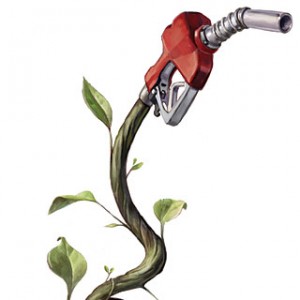Second generation biofuels boost a collective status as non-food sources of fuel, including such energy resources as agricultural and forestry residue, perrenial grasses, various flowers and plants, and even municipal solid waste. Independent of the “fuel vs. food” debate, this category of biofuel is largely in the research and development stage as of present, though several transnational corporations are expressing increased interest in this undeniably promising energy technology.

In contrast to the first generation yet again, this type of fuel is composed of lingocellulosic material, making extraction more difficult. This difference in physical composition is reflected in more intense methods of production. In fact, one might go so far as to say that lingocellulosic matter is “naturally engineered” in such a way as to protect the starches within, again signifying the difficulty presented by extraction.
(Composed by Robert King, edited by Eli Karp)
References
Patterson, Bob. “Competing Global Resources: Food vs. Fuel.” North Carolina State University. PDF. Nov. 2011.
“Second Generation Biofuels.” N.p., n.d. Web. 16 Apr. 2015.
